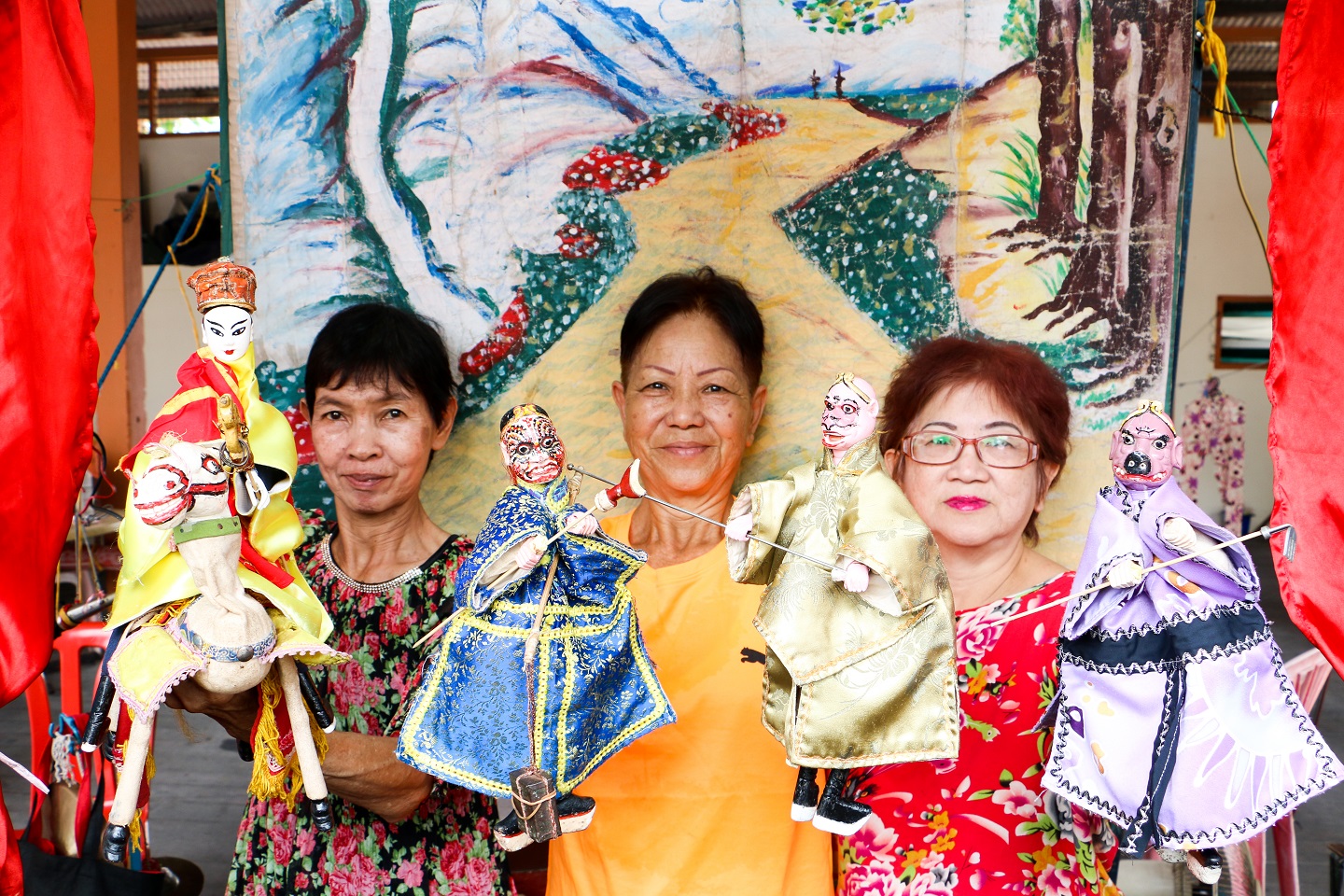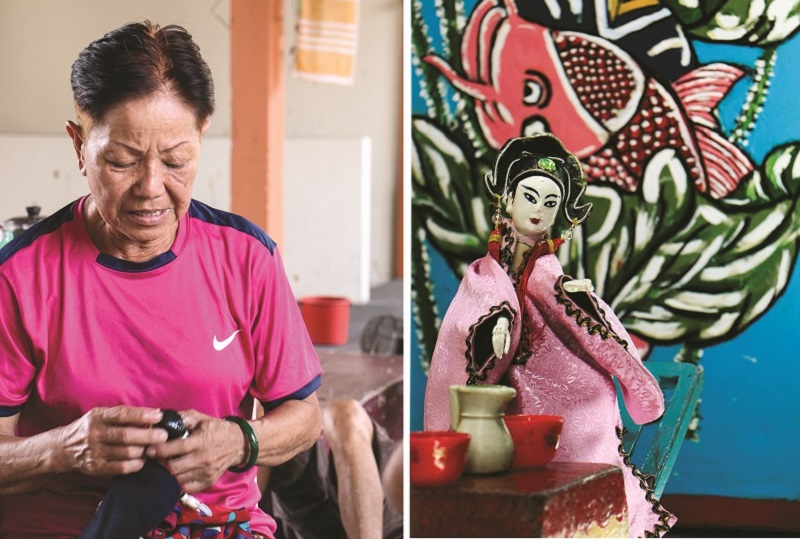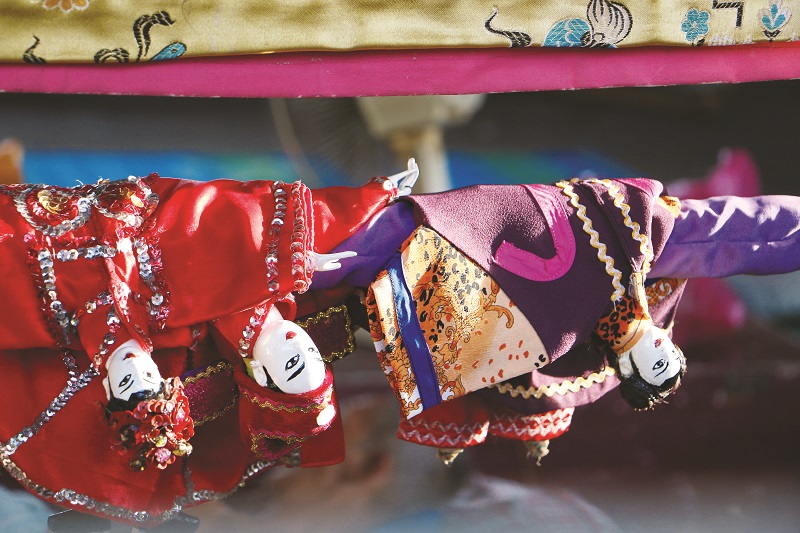
Po Te Hi was in its prime during the early 20th century, when Chinese drama emerged as popular in Malaysia (Photo: DPAC)
When we talk about the cultural performances that form the rich fabric of Peranakan culture, lion and dragon dances as well as the percussive 24 Festive Drums easily come to mind. Yet, as these performances stand the test of time, others have slowly faded into obscurity. Po Te Hi, a type of opera performance involving cloth puppets, is an example of a traditional Peranakan art form that is in danger of being forgotten.
Back in the 17th century, in China’s Fujian province, Po Te Hi was already being performed just as Isaac Newton was publishing his theory of universal gravitation on the other side of the globe. As time progressed, this influential art form spread to other parts of China, Taiwan, and eventually, Malaysia.
Po Te Hi was in its prime during the early 20th century, when Chinese drama emerged as popular in Malaysia. However, few groups that perform the art form remain today, with the Penang-based Ming Yok Feng being one of the precious few. The puppet troupe, founded in the 1930s, is led by third-generation descendant, 66-year-old Ooi See Han. She sits down with Options to tell us more about Po Te Hi, Ming Yok Feng’s upcoming performance in Damansara Performing Arts Centre, as well as what it means to her.
“It was a long time ago, when my grandfather migrated to Malaysia from China,” she begins, “Back then, he had a job that involved lifting heavy objects. In his spare time, he performed Po Te Hi on a small scale, and that was where it all began.”
Today, she leads a group of Po Te Hi performers who have spent half their lifetime in the troupe. “I took over Ming Yok Feng in 2011,” she says, “I started performing with them after I married, and back then my sister was in charge of the whole operation.”

Po Te Hi is not an easy skill to learn, let alone master. As Ooi explains, “The most important thing a Po Te Hi performer must know about is the Gate of Life and Death. This means that you must know what to make the puppet do on stage and when to do it, depending on the story. When the situation calls for your character to be angry, you must make the puppet appear fierce. When it’s a melancholic moment, you must make the puppet ‘cry’.
“In Taiwan, there is a Po Te Hi performer who demonstrates this extremely well. He can make his puppet cry realistic tears, or make the puppet smoke! My grandfather also used to be able to make the puppets lifelike in this sense,” she adds.
Ooi and the members of Ming Yok Feng will be demonstrating this highly technical skill in their upcoming performance at DPAC. As part of the Damansara International Arts Festival 2018, they will be performing the story of Monkey King vs. The Red Boy.
“It is a story from Journey to the West,” she shares. “Red Boy, who is the son of Bull King and Princess of the Iron Fan, plots to capture Master Tang, who is journeying to the West with Monkey King and his disciples. Red Boy intends to gain immortality through eating Master Tang’s flesh. However, he knows of Monkey King’s strength, and needs to divert his attention in order to capture Master Tang. To do this, he takes the form of a child, ties himself to a tree branch and shouts for help. When Master Tang passes by, he hears the cries, which capture his attention. Monkey King is aware that the forest they’re passing through is infested with demons, and asks Master Tang to ignore it, citing that it may be a trap. Master Tang, blinded by his compassion, ignores his advice and orders Monkey King to save the child.
“Once they rescue Red Boy, Master Tang asks Monkey King to carry Red Boy as they bring him to safety. Seizing this chance, Red Boy uses a heavy body spell that puts a decoy in his place, which diverts Monkey King’s attention while he captures Master Tang. Before Monkey King realises what is going on, Red Boy captures Master Tang before fleeing to his cave. Monkey King, along with Zhu Bajie and Sha Wujing, must rescue their master before it’s too late.”

Ooi hopes the performance will expose more people to the art of Po Te Hi as less and less people are willing to learn the art nowadays. She cites several factors for this. “The problem with learning Po Te Hi is that it demands a great deal of patience. Simple things like making the puppet stand straight or making it walk step by step becomes difficult when you’re doing it yourself. The younger generation feels that learning Po Te Hi is too difficult and time-consuming, exacerbated by the fact that performing it nowadays is not very profitable.”
On her hopes and aspirations for the future, she says, “I hope for a lot, but primarily I (and Ming Yok Feng) hope that we can pass down this cultural heritage to the next generation. Po Te Hi may be commonplace in China or Taiwan, but it is rarely heard of in Malaysia. We really wish the young generation can take the time to learn Po Te Hi so that it isn’t lost forever.”
As Henry James once said, “It takes an endless amount of history to make even a little tradition.” Under Ooi’s stewardship, Ming Yok Feng will continue to perform Po Te Hi shows, but eventually it will be the younger generation’s turn to preserve this tradition. She plans to pass the baton to her niece, who now has a senior role in running Ming Yok Feng. As long as there is someone willing to learn, the flame will continue to burn.
Journey to the West: Monkey King vs the Red Boy will be staged at Damansara Performing Arts Centre, Empire Damansara, Damansara Perdana, PJ, on July 7 and 8 at 2pm. Tickets are RM55. To purchase or for more information, visit www.dpac.com.my. This article first apppeared on July 2, 2018 in The Edge Malaysia.


